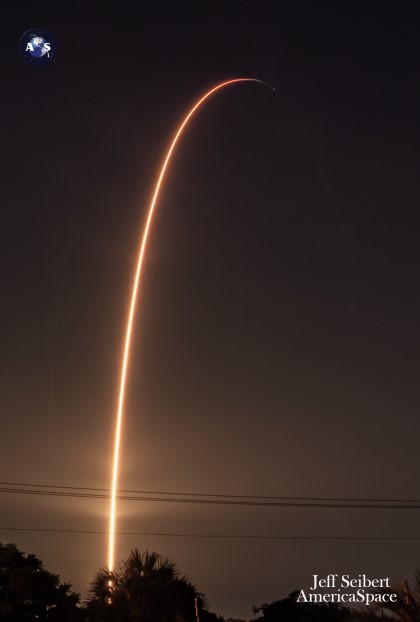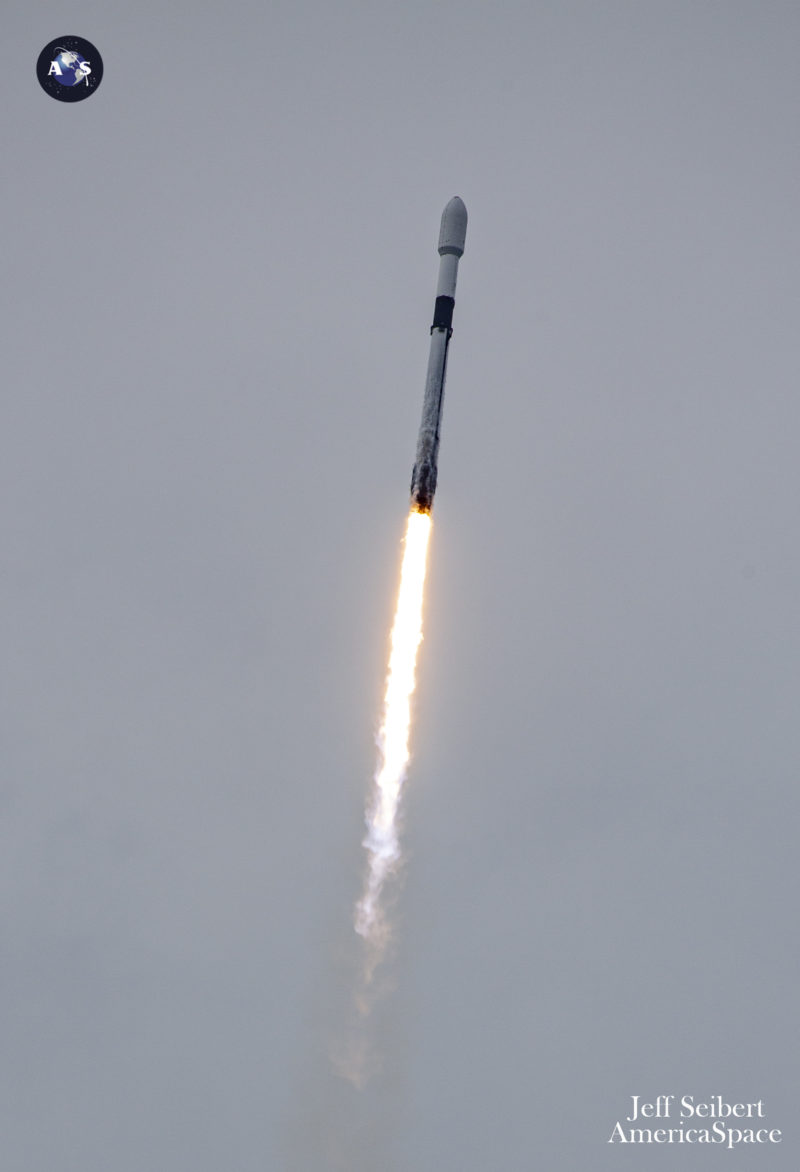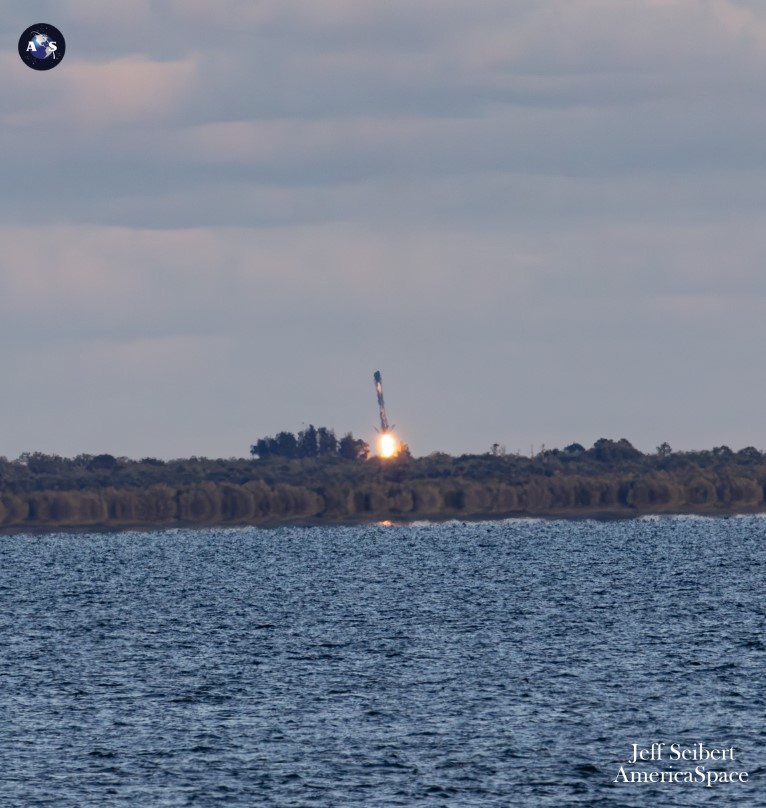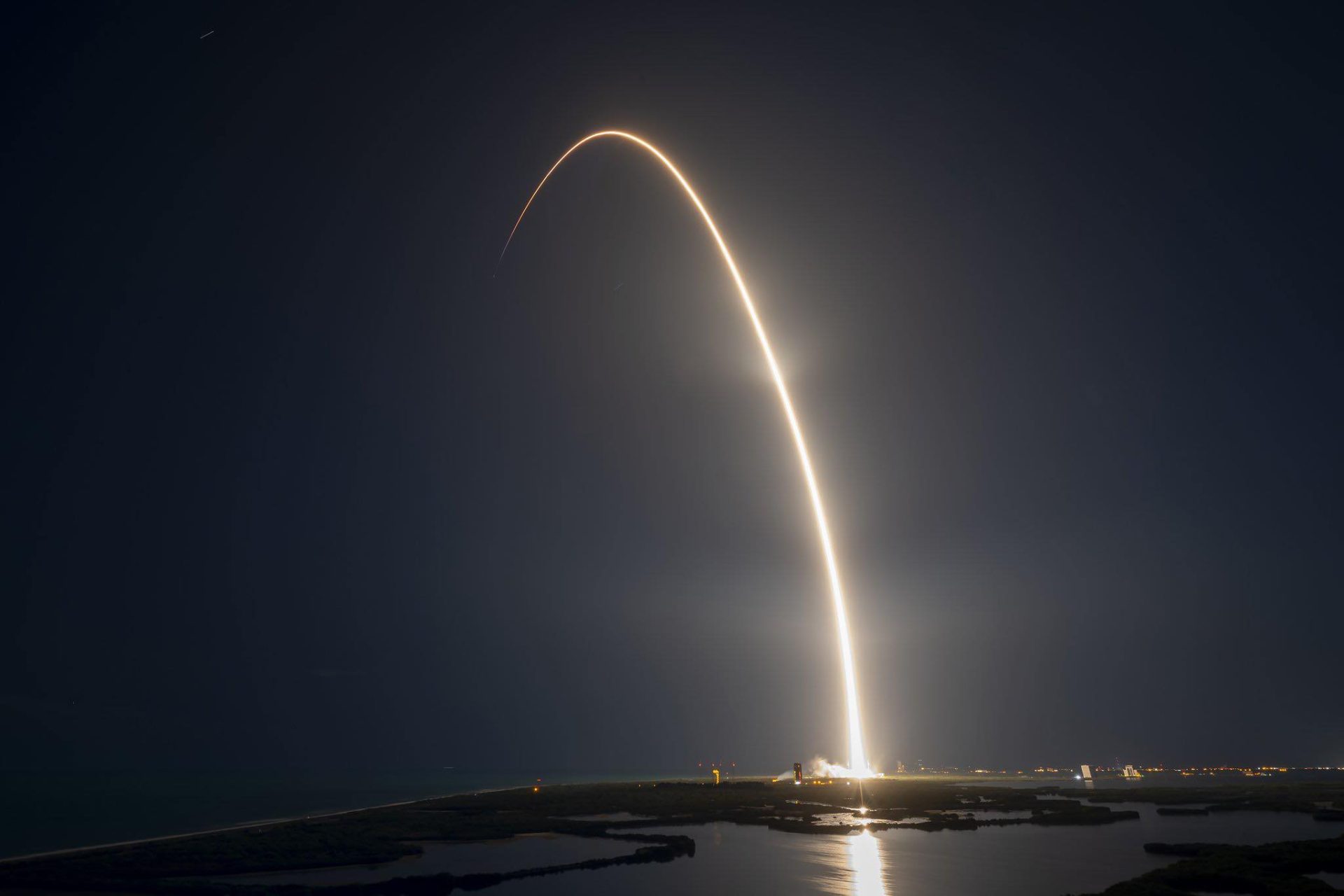
SpaceX’s ninth Falcon 9 booster to reach 15 launches roared into the night on Sunday, laden with 23 Starlink internet communications satellites. Seasoned B1073—flying for her fourth time in 2024 after one of her quickest mission-to-mission turnarounds to date—took flight at 8:53 p.m. EDT, right on the opening of a long, three-hour-plus “window” of opportunities and returned eight minutes later to a pinpoint landing on the East Coast-based Autonomous Spaceport Drone Ship (ASDS), “A Shortfall of Gravitas”.


Last night’s launch brings to six the total number of Falcon 9s launched inside the opening half of May and pushes to 49 the overall sum of SpaceX flights achieved so far this year. Thirty-four of those missions have delivered over 760 flat-packed Starlinks to orbit, including the first groups of “Direct-to-Cell” satellies, which permit mobile network providers to offer “seamless global access to texting, calling and browsing”, whether “on land, lakes or coastal waters”, without the need to change hardware or firmware.
Other flights deployed three large geostationary communications satellites, two crewed and two uncrewed voyages to the International Space Station (ISS), missions to observe the health of Earth’s oceans and land a privately-funded spacecraft on the Moon and a pair of payloads for the U.S. Space Force. All told, a total of 850 small and large spacecraft have been emplaced in low, medium and geostationary orbits or despatched to lunar distance by 16 reusable Falcon 9 cores, two of which came online for the first time earlier in 2024.


Flying last night’s mission was B1073, which became the ninth Falcon 9 to reach a 15th launch since December 2022. She previously supported the 300th outing by a Falcon 9 in January, helped cement new empirical records in March for the shortest interval between a pair of launches and a trio of launches and delivered the 11-payload Bandwagon-1 “rideshare” mission—which comprised a raft of small satellites from the United States, Japan, India, South Korea and Australia—just last month.
B1073 entered service back in May 2022 and her 13 previous flights have boosted more than 300 Starlinks uphill, as well as the SES-22 and Amazonas Nexus geostationary communications satellites in June 2022 and February of last year and launched a lunar-bound mission in December 2022 with Japan’s Hakuto-R Moon lander, the Rashid rover for the United Arab Emirates (UAE) and NASA’s water-ice-seeking Lunar Flashlight. In March of 2023, on the seventh mission of her stellar career, she became the most flight-seasoned Falcon 9 ever to lift a payload—whether human or cargo—to the International Space Station (ISS) with the CRS-27 Cargo Dragon.


In readiness for last night’s launch, the East Coast-based Autonomous Spaceport Drone Ship (ASDS), “A Shortfall of Gravitas”, put to sea out of Port Canaveral last week to recover B1073 from her latest mission. And Florida’s usually intractable weather gods smiled kindly on the proceedings, pledging an 85-percent likelihood of acceptable conditions for a three-hour-plus “window” of launch opportunities overnight Sunday/Monday from 8:53 p.m. EDT through 12:11 a.m. EDT.
“Expect drier and slightly cooled conditions across Central Florida today as the frontal boundary continues moving south,” noted an encouraging update from the 45th Weather Squadron at Patrick Space Force Base early Sunday but cautioned that “a low-pressure system will begin to form in the Western Gulf of Mexico, creating upper-level cloudiness over the Space Coast”. That was predicted to create a slight chance of violating the Thick Cloud Layers Rule “associated with the encroaching upper-level cloudiness”.


B1073 rose perfectly from Cape Canaveral Space Force Station’s storied Space Launch Complex (SLC)-40 at 8:53 p.m. EDT and speared into the darkness, momentarily turning night into day across the Space Coast. She returned to a smooth drone ship touchdown a little more than eight minutes later, while the Falcon 9’s second stage executed a lengthy “burn” to boost the 23 Starlinks—totaling over 37,700 pounds (17,100 kilograms)—into low-Earth orbit, deploying them at 65 minutes into the mission.
As a network, Starlink enables high-speed and low-latency internet provision to over 70 sovereign nations and international markets in North and South America, Europe, Asia, Oceania and Africa. Last week, the Hawthorne, Calif.-headquartered launch services provider announced that Starlink connectivity is now available in Uruguay, bringing to 76 the total number of sovereign nations or regions to receive coverage.


The downsized V2 Mini satellites, first flown in February of last year, boast three to four times greater “usable” bandwidth than earlier Starlink iterations. “V2 Minis include key technologies—such as more powerful phased-array antennas and the use of E-Band for backhaul—which will allow Starlink to provide 4x more capacity per satellite than earlier iterations,” SpaceX explained. “Among other enhancements, V2 Minis are equipped with new argon Hall thrusters for on-orbit maneuvering.”
Florida-based intercity operator Brightline adopted Starlink on its trains in 2023, the first passenger rail service in the world to do so. Additionally, El Salvador’s Ministry of Education has begun integrating Starlink capability into its schools to help close the digital divide between urban and remote rural communities and 50 Rwandan schools are now connected via Starlink’s high-speed internet service. As of April, Starlink reportedly had about 2.7 million registered subscribers or customers worldwide.
FOLLOW AmericaSpace on Facebook and X!


